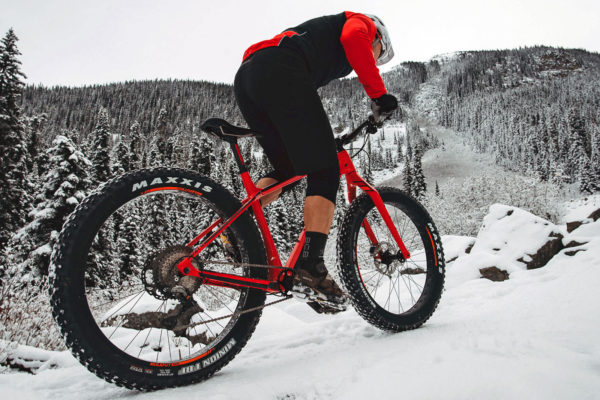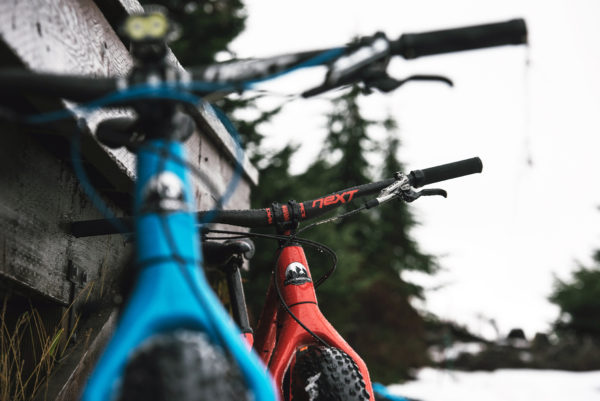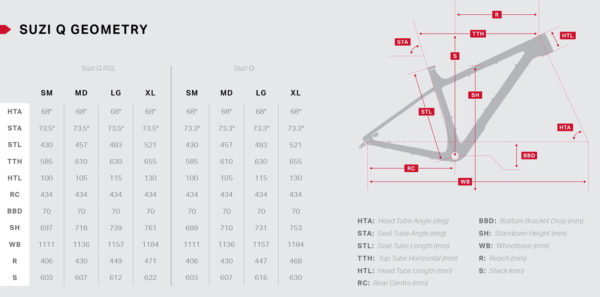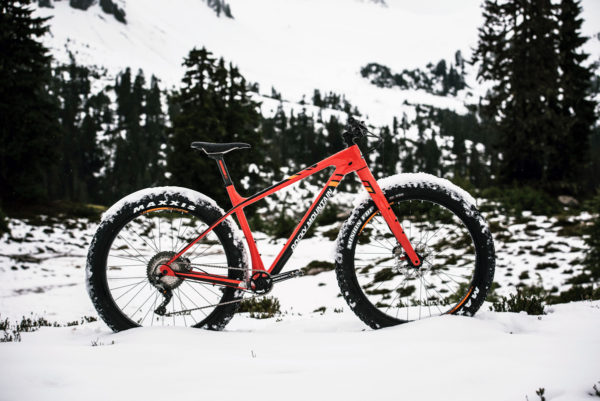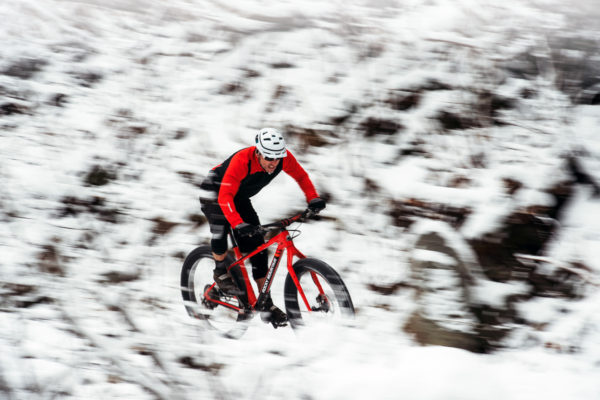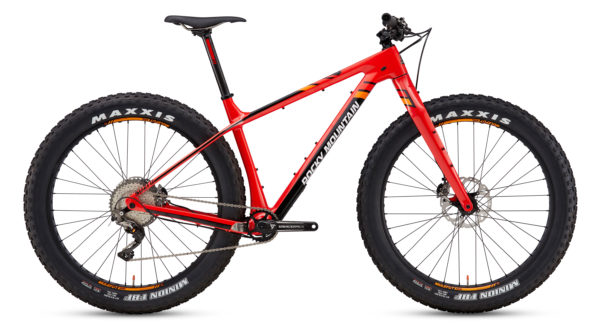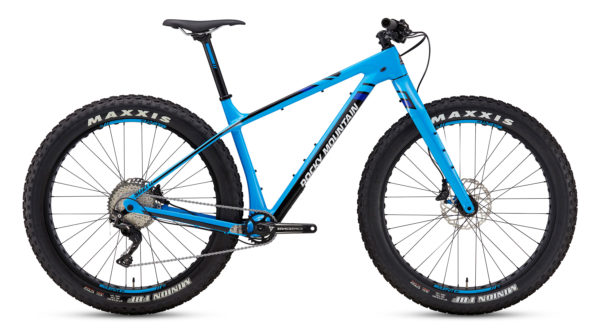Rocky Mountain’s new line of fast moving fat bikes aims to turn the notion of slow, slogging wide rubber on its head. Instead of thinking of fat as being able to drop tire pressures imaginably low to creep over loose sand & rocks and crawl through deep mud & snow, the 2017 Rocky Mountain Suzi Q carbon fat bike that we first glimpsed back at Eurobike is reimagined as a lightweight carbon (or alloy) all-mountain hardtail with a narrow Q-factor and short chainstays that can still squeeze in wide tires. That makes it as agile on singletrack as it is capable on loose terrain. Its key is dropping the 26″ fat tire standard and working with a new 27.5×3.8″ wheel/tire combo that gives all the upsides of the smaller wheels with a lot of other benefits. Maybe snow is where 27.5+ is going next…
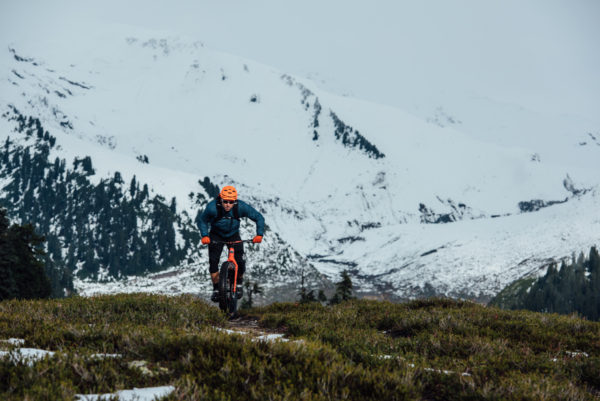
At its heart the Suzi Q looks like a good balance between a normal Q-factor hardtail and a proper fat bike. While we’ve sometimes wondered about how much tire you could cram in a bike that still felt ‘normal’ to ride, Rocky Mountain seems to have had similar thoughts. Why not have a 27.5+ bike that would be as much fun to ride in the snow through the winter as it would be to rail hardpack trails in the summer.
The 1x only Suzi Q’s 192mm Q-factor cranks in a PressFit 107 bottom bracket (effectively the same spacing as a normal 83mm BB) ends up 20mm narrower than most fat bikes for both improved pedaling feel & performance. They pair with a 177mm hub for a mid-width rear end. That still ends up at least 20-24mm wider at the pedals than most mountain bikes to fit the chain around the wide tire, but cutting that width difference in half is a big improvement for pedaling comfort.
Geometry-wise Suzi Q gets a stable trail feel with a 68° headtube and long reach, but keeps it nimble with short-for-fat 434mm chainstays. Rocky Mountain says they were worried with the “autosteering” feel that many fat bikes get with that big wheel out front, but managed to settle on a fork offset and front end feel that is much more predictable and fun to ride than other similar bikes.
Besides a quick handling and a light carbon frame, the light 27.5×3.8″ tire combo developed with Maxxis is actually a pretty big deal. Head to head with the common 26×4″ used for fat racing and all around riding, the new 27.5++ setup offers a bigger outside diameter for better rollover, while still offering plenty of volume for ultra-low pressures on the 65mm wide Sun Ringlé rims. Sure if you are looking for the fattest 5″ wide tire to sit on top of packed snow this isn’t your bike, but the 27.5×3.8″ setup is lighter and should actually roll up and over soft snow or any other trail obstacles even better.
Susi Q comes in both full carbon frame (RSL) and aluminum frame variants, in four complete builds, all now available, each one in four sizes from S-XL. Set up rigid but suspension corrected for a 100mm Bluto, the -90°, -70° & -50° get full carbon monocoque forks, while the -30° gets an all-alloy one and a lower price. All get light bolt-on axles that are said to save 100g per bike compared to a standard Maxle. The bikes also include integrated chainstay & downtube protectors, internal routing with a Di2 friendly stealth battery port, stealth dropper routing, and a whole bunch of braze-on points for: 2 bottle cages on the fork, 2 more in the front triangle, main triangle Rivnuts for bolt-on frame bags, and more.
The top all carbon Suzi Q -90° retails for $4300 with an XTR drivetrain, XT 11-46 cassette on a DT hub, Race Face 28T Turbine crank, and tubeless ready Sun Ringlé Düroc 65 rims & 3.8″ tubeless Maxxis Minion FBF tires. Without pedals and setup tubeless, it is said to weigh just 25.3lb.
For a grand less the -70° shares the same carbon frameset, even the same gearing & wheel/tire combo, just with XT shifting and a bit more affordable cockpit bits to sell for $3300.
Going with a hydroformed 6061 aluminum frame, the -50° shares the carbon fork and the top wheel/tire/cassette setup but gets a mix of SLX & XT to get the price down to $2600.
At the lowest point of entry the Suzi Q -30° retails for $1900 with the alloy frame, alloy fork, and a pared back build, featuring SRAM NX, Level brakes and a more narrow 11-42 cassette on wheel using the same rims & tires but cheaper hubs.
